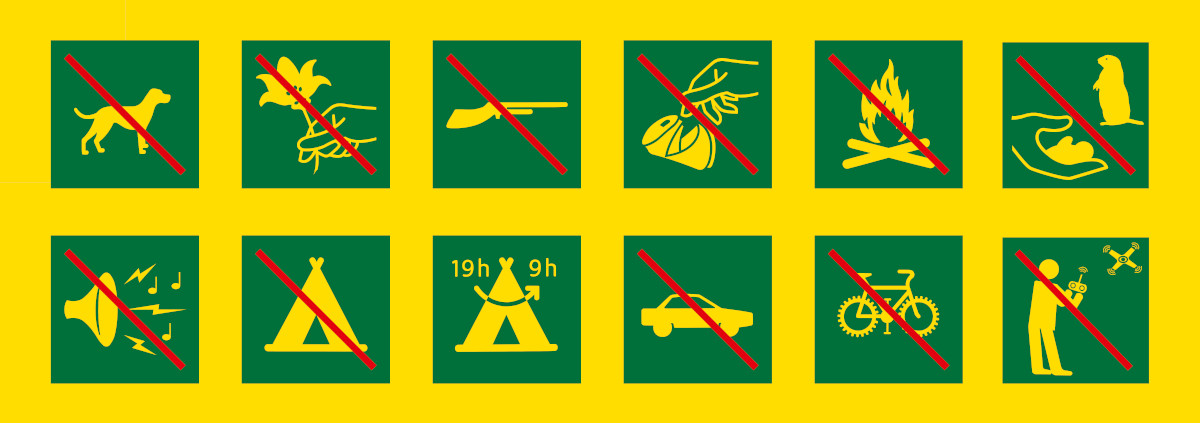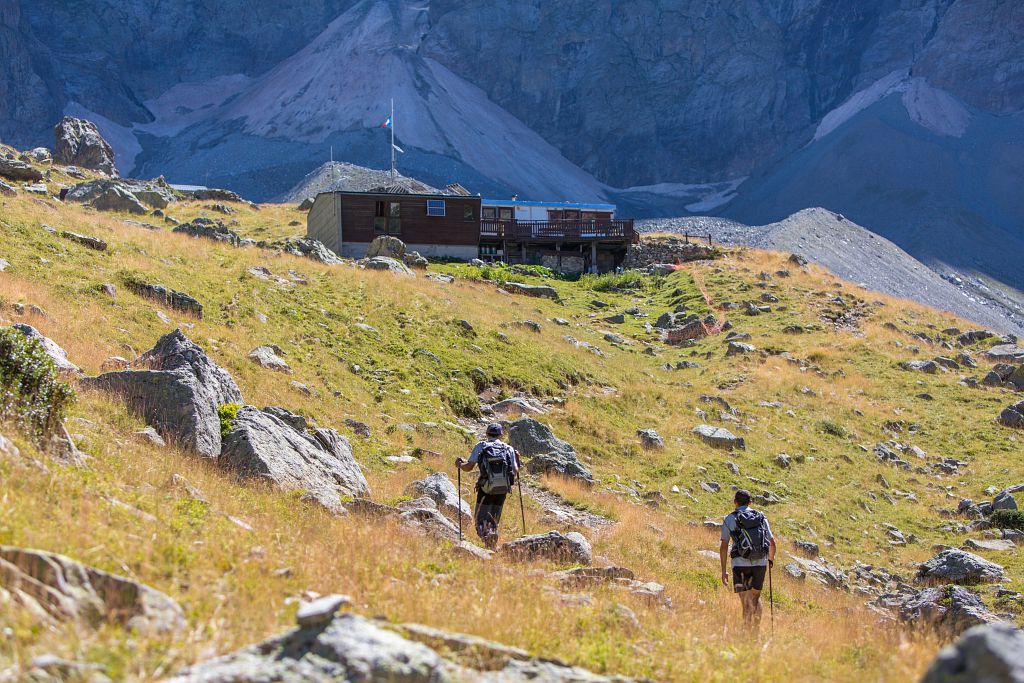
3. From Le Désert-en-Valjouffrey to Font Turbat refuge
Description
- Follow the GR 54, crossing the Ruisseau de la Laisse, which leads to the Col de Côte Belle on the left and the Col de la Vaurze on the right. Take the wide path along the meadow on the right bank of the Bonne, which leads to the entrance to the Ecrins National Park (information panels).
- Beyond the Cascade de la Pisse, continue on the path, which rises along the bottom of the valley, through fairly sparse vegetation typical of rocky areas. At the bend in the path, the summit of L'Olan comes into view.
- Pass the Châtellerat hut and continue on to the Font Turbat refuge.
- Departure : Désert-en-Valjouffrey
- Arrival : Font Turbat refuge
- Towns crossed : Valjouffrey
18 points of interest
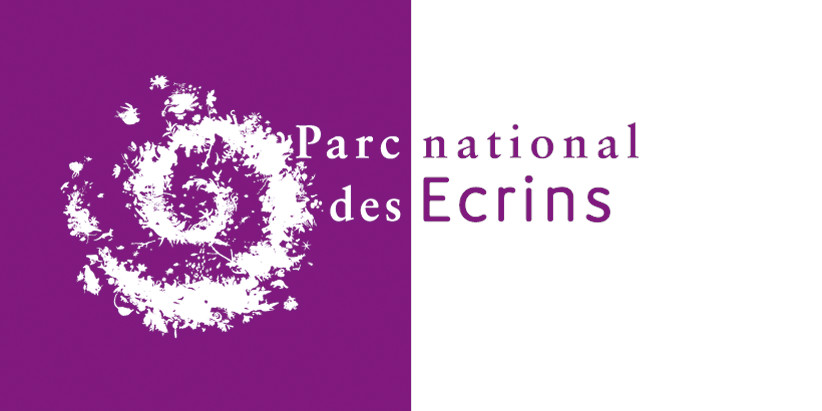
 Know-how
Know-howHay Fields
The hayfields where the grass is mown have been improved over the generations by the extraction of stones which have then been stacked in piles which are known locally as “clapiers”. These piles of stones mark the boundaries between the crops and the flocks.

Pouillot véloce - PNE - Saulay Pascal  Fauna
FaunaCommon Chiffchaff
A bird that you hear but do not see, the Common Chiffchaff nicknamed the "écu counter”. Its song, which is very easy to identify, evokes the sound of gold coins falling one by one in to the cash register as they are counted. Green-brown and greyish on top, its feathers are off white underneath, beige on the chest with a barely visible pale brow.
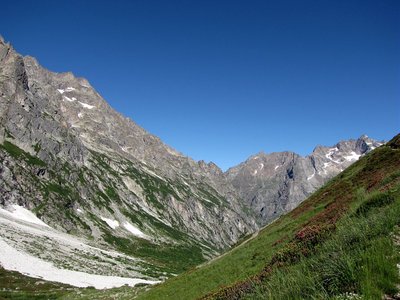
Le vallon de Font Turbat - PNE - Nicollet Bernard  Geology and geography
Geology and geographyGlacial valley
The high valley of Bonne, or Font Turbat, is a typical glacial valley in the form of a trough with morainic bars marking the stages of the retreat of the glacier. The lower shelves or glacial shoulders are suspended above the trough 500 to 600 m in size of which the steep sides dominate the layers of scree and the alluvial fans (mass of debris transported by the water It finishes upstream by a vast cirque at the imposing foot of the rocky wall of theOlan (3 564 m), hemmed in at its foot by the Maye black glacier. At the time of the last glaciation of Würm, 10 000 years ago , the two glaciers of Font Turbat and Maye joined together and fed into a powerful glacial tongue in the Bonne valley. It formed the valley in to the shape of a basin by scraping and polishing rocky walls in the granite. The lowest moraines, masses of rocky debris transported by the glaciers are situated around Châtellerat cabin.
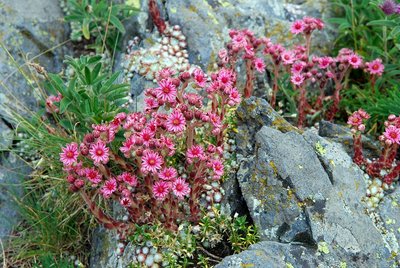
Joubarbe à toile d'araignée - PNE - Warluzelle Olivier  Flora
FloraCob web House Leek
Thick leaves organized in tight rosettes shoot up towards the sky twists of white hairs which are quite similar to the traps woven by certain spiders. Not less competitive than the rhododendrons, The Cobweb House Leek is adapted to resist drought. The main rosette and the smaller shoots well grouped together; make a real water reserve which is then marvelously stocked by the fleshy leaves... It also develops many kinds of hairs that collect the dew.
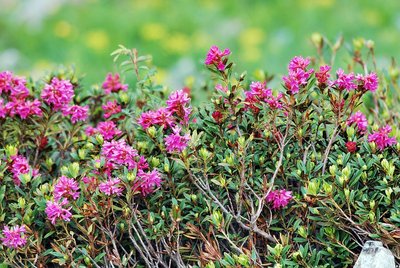
Rhododendron ferrugineux - PNE - Vincent Dominique  Flora
FloraRhododendron
Nicknamed the rose of the devil, the rhododendron ferrugineum has the capacity of placing itself between the rocks and boulders where the soil is rare. It keeps its stiff leaves which are dark green and shiny and rust coloured underneath right through the winter. It gets its name from this rust colour. Every year, between the end of July and the beginning of August its branches are crowned with bouquets of flowers coloured rose and purple.
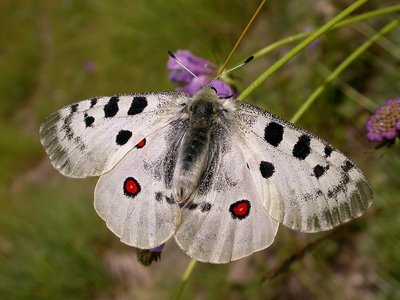
Grand Apollon - PNE - Combrisson Damien  Fauna
FaunaApollo
A big white butterfly with black and red markings is not shy; the Apollo is easy to see between the middle of June until the end of July... It lays its eggs on the White Stonecrop, a perennial plant with white flowers living on scree and gravel... The male Apollo is born before the female and waits patiently to procreate. It is to be noted that it benefits from national protection; its transport and destruction are forbidden.
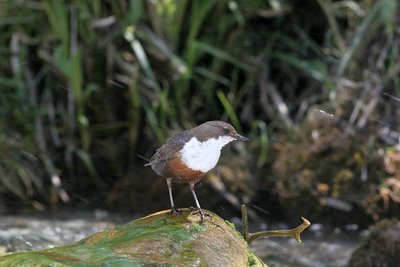
Cincle plongeur au printemps dans un torrent - PNE - Chevalier Robert  Fauna
FaunaWhite-throated Dipper
Easier to observe than the Common Chiffchaff, the White-throated Dipper lives beside rivers and mountain torrents... A little red and grey bird, with a short tail, it has a fine beak, a white mark on the chin and on the chest. This astonishing sparrow has the particularity of being able to walk under the water against the current in search of food. It flattens itself down and grips on to the bottom with its claws, opens its eyes, which are protected from the flow by a fine membrane and spots worms, larvae, little crustaceans and fish.

Cascade de la Pisse - PNE - Nicollet Jean-Pierre  Water
WaterCascade de la Pisse
With its origin in the high crystalline ground, the torrent bounces down waterfalls and cascades until it meets the Pisse at a height of 40 m.

Trace de blanchon dans la neige - PNE - Corail Marc  Fauna
FaunaMountain Hare
There are many Mountain Hares or Blue Hares that observe you; the opposite is rarely true... Brown in summer, white in winter, the Mountain Hare is present across the Alps. Like the European Hare from which it differs being smaller, with a white tail and shorter ears, It leaves Y shaped tracks in the snow due to the way it moves in little jumps (it brings its back legs in front of the front legs.). However, it is often its tracks and its little dry, round droppings that indicate its passage. Its large fluffy feet are like snowshoes enabling it to stay on the surface of the snow even when it is powdery.

Tarin des aulnes - PNE - Combrisson Damien  Fauna
FaunaEurasian Siskin
Feeding principally on the seeds of the Alder, the Birch and conifers, the Eurasian Siskin only nests in conifer forests in the mountains of the Northern Alps during the reproduction period... The male, more colourful than the female, can be recognized from its bright green-yellow feathers its black forehead and its little white bib under the beak. It is in winter, that you can observe them, sometimes in big groups, descended from the mountains in search of food...
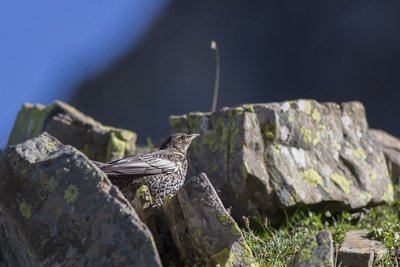
Jeune merle à plastron - PNE - Saulay Pascal  Fauna
FaunaRing Ouzel
The Ring Ouzel is easy to identify: it endorses the black feathering of the blackbird, but is distinguished from it by the big white bib on the chest, the light borders of its wings and abdomen. Insects, grasshoppers, worms and berries make up its menu. This shy mountain blackbird, that flies fast, lives at the edge of forests of larch, Scots pines, Spruce and Swiss Pines pins at an altitude of between 1 000 to 2 500 m. Present in the mountainous massifs it nests in the lower branches or in the hollow trunk of a tree, a crack in the rock or building. Essentially a migrator, the Ring Ouzel hibernates in Spain or in Northern Africa. It comes back to the Alps from the month of March.
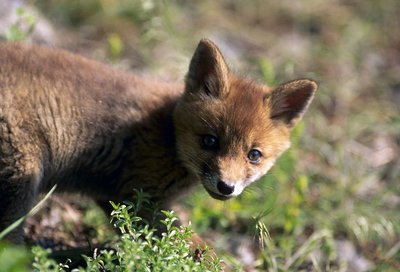
Renardeau - PNE - Chevalier Robert  Fauna
FaunaRed Fox
The Fox was originally called the goupil in French and this animal was the central character of the hugely famous “novel” written in the 12th century about a goupil called "Renart" (later “Renard”), who was, a clever knight tricking and making fun of the clergy and the powerful who were unable to deal with the people. Renart made fun of them and was sometimes cruel. He was so popular that his name became that of the animal species he portrayed. Another literary reference to this animal is by Jean de la Fontaine whose character « Maître Renard » features in twenty of his fables...
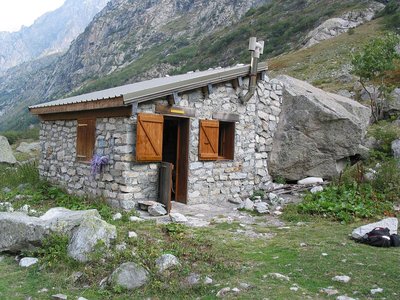
Cabane pastorale du Châtellerat - PNE - Nicollet Jean-Pierre  Hut
HutChâtellerat Cabin
In 1908, Châtellerat pastoral cabin was hastily built by the community of Valjouffrey. Destroyed several times in avalanches, is still sheltered numerous mountaineers. It was rebuilt in 1921 in a less exposed place and already ideas about a « real » refuge were growing.
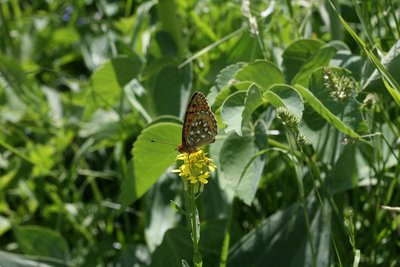
Papillon grand nacré - Bernard Nicollet - PNE  Fauna
FaunaDark green fritillary
Thanks to its impressive wingspan, the dark green fritillary makes its presence noticed! The top side of its wings is a beautiful orangey colour embellished with black spots. Underneath, they are marked with bands of mother-of-pearl against a background of greenish scales. This is a large butterfly with a wingspan of 50 to 60 cm. It is relatively common but is becoming less so due to loss of habitat, caused by changes in farming practices. In fact, its caterpillar which is black dotted with orange spots along its sides, essentially feeds on violet leaves which are only found in extensively grazed meadows.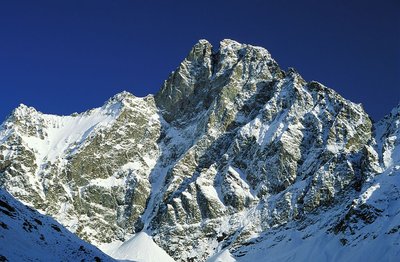
L'Olan, versant nord-ouest - PNE - Nicollet Jean-Pierre  Top
TopPic de l'Olan
It was on the 29th June 1877 that Coolidge, with Christian Almer father and son, carried out the first ascent of the pic de l'Olan. On the 5th August 1980, Arthur Cust with Pierre Gaspard and Roderon opened the Northern ridge. At that time the bivouac was still obligatory at the bottom of the Bonne valley.
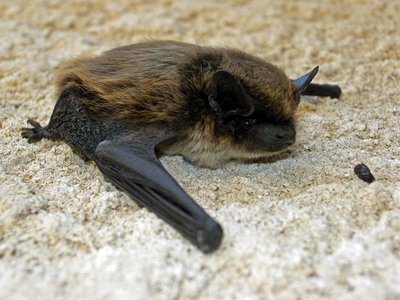
Vespère de savi - PNE - Combrisson Damien  Fauna
FaunaSavi Pipistrelle Bat
With a small size, and a contrasted coat, an off white abdomen and a golden brown back, Savi’s Pipistrelle can be recognized by the black membranes, it’s rather pointed muzzle and at the end of its tail from which several vertebrae are visible by the uropatagium, a skin membrane situated between the two hind legs... With a calm nature, this bat is a rock species mainly from the South, but it can also reach the high mountains at an altitude of more than 3 000 m.
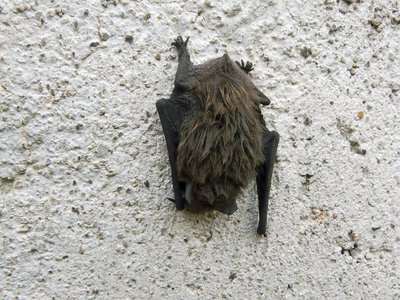
Pipistrelle commune - PNE - Nicollet Jean-Pierre  Fauna
FaunaCommon Pipistrelle
Brown with relatively short ears, the Common Pipistrelle and the Soprano Pipistrelle fight over the title of the smallest bat in Europe... The Common Pipistrelle can be seen in very diverse environments even above an altitude of 2 000 m At the time of Jules Ferry, school books boasted about the merits of bats .In fact, insectivores, they consume every day a quarter to a third of their own body weight in mosquitoes and other insects.. They emit ultra-sounds which are inaudible to the human ear but detectable thanks to a captor. This technique enables them to orient themselves when moving about at night to capture their prey. They can often be seen around street lighting hunting the insects that have been attracted by the light.
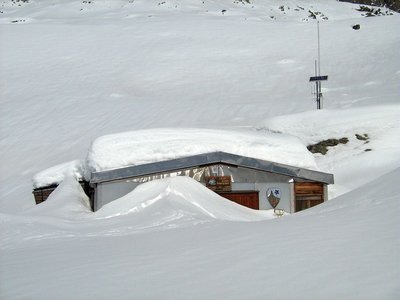
Le refuge de Font Turbat sous la neige - PNE - Albert Christophe  Hut
HutFont Turbat Refuge
During the summer of 1923, the guide Célestin Bernard took charge of the construction of the refuge at Font Turbat. Several great mountaineering names are associated with it like Guery, Ripert, Frendo, Fourastier, Boell, who came to explore the mountains at Valjouffrey. In 1934, Devies and Gervasutti traced a historic itinerary in the North-West face of the Pic de l'Olan. 22 years later, the direct Couzy-Desmaison (ED) was opened to the left of the previous one, surmounting the steepest part of the face. The construction of the refuge As it stands now dates from 1962. It was extended and renovated in 1996-1997.
Altimetric profile
Recommandations
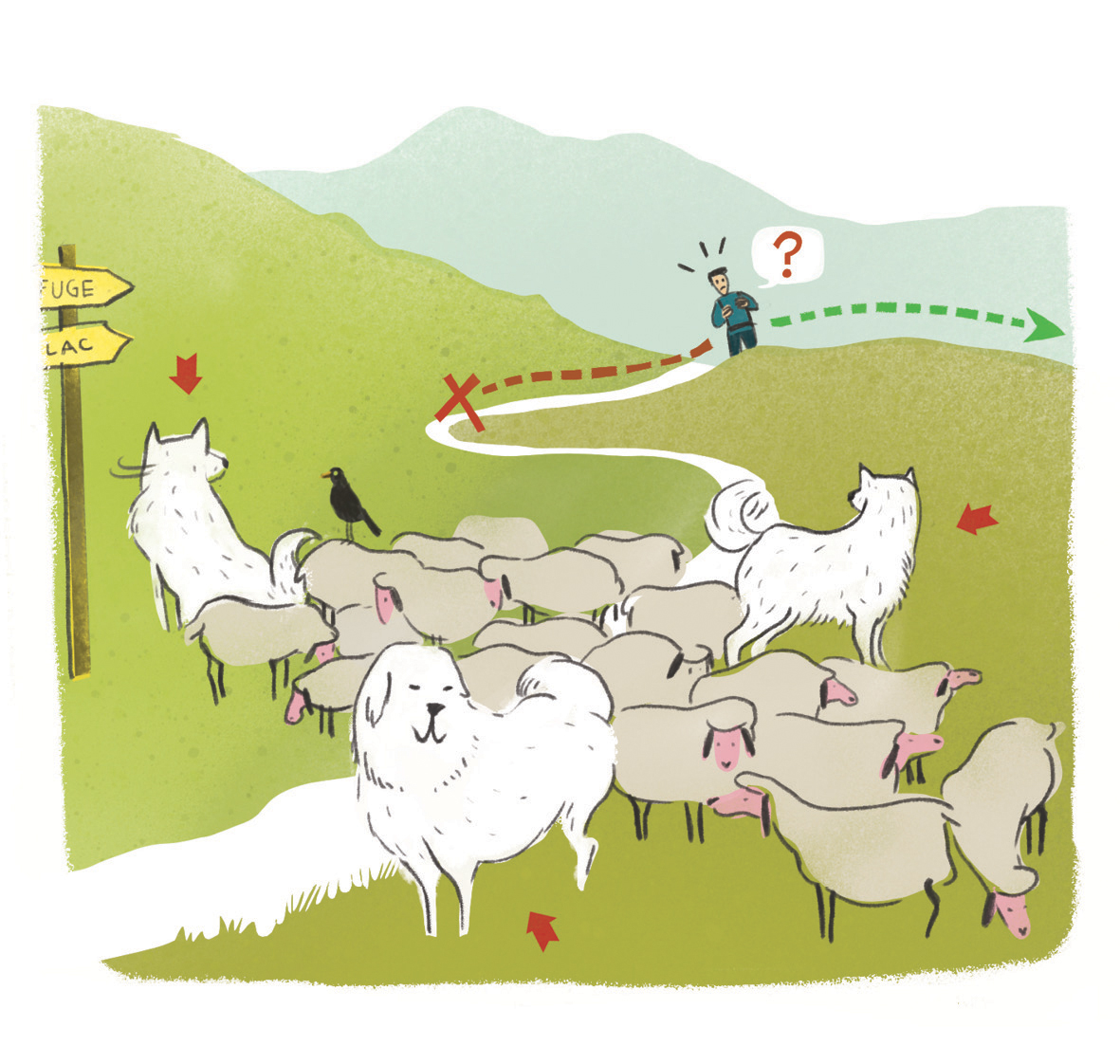 In mountain pastures, protection dogs are there to protect the herds from predators (wolves, etc.).
In mountain pastures, protection dogs are there to protect the herds from predators (wolves, etc.).
When I hike I adapt my behavior by going around the herd and pausing for the dog to identify me.
Find out more about the actions to adopt with the article "Protection dogs: a context and actions to adopt".
Tell us about your meeting by answering this survey.
Information desks
Maison du Parc du Valbonnais
Place du Docteur Eyraud, 38740 Entraigues
Reception, information, temporary exhibition room, reading room and video-projection on demand. Shop: products and works of the Park. Free admission. All animations of the Park are free unless otherwise stated.
Source

Report a problem or an error
If you have found an error on this page or if you have noticed any problems during your hike, please report them to us here:

